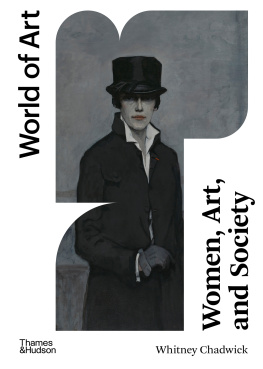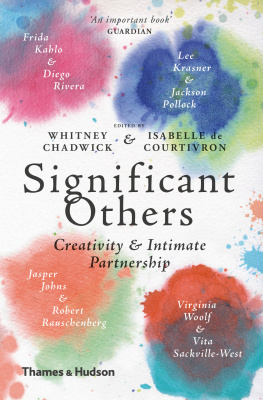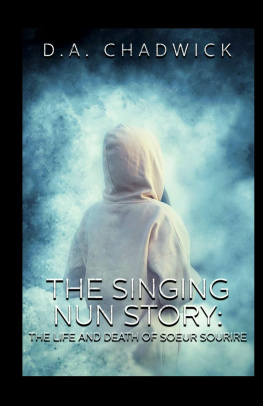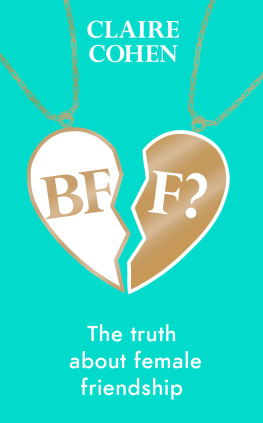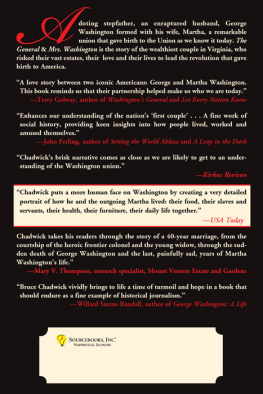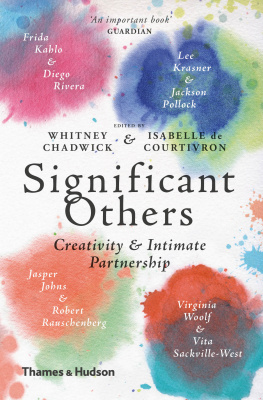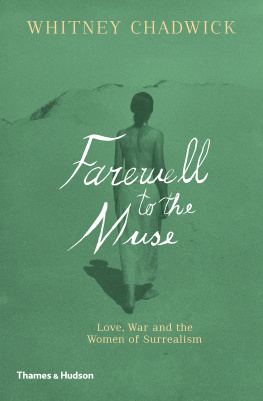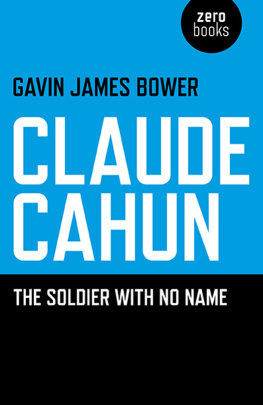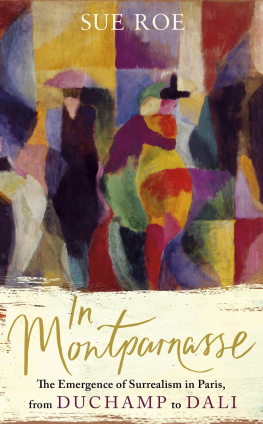

About the Author
Whitney Chadwick is Professor Emerita at San Francisco State University, and has written widely on 20th-century European and American art, surrealism and gender issues. She is the author of Women Artists and the Surrealist Movement, the first full-length study of the women of surrealism, and her Women, Art, and Society is a required text in art history courses throughout the world. She has also contributed to exhibition catalogues on Sheila Hicks, Mona Hatoum, Wifredo Lam, Nalini Malani, Leonora Carrington and Lee Miller.
Other titles of interest published by
Thames & Hudson include:
Women, Art, and Society
Women Artists: The Linda Nochlin Reader
Seeing Ourselves: Womens Self-Portraits
The Lives of Lee Miller
See our website
www.thamesandhudson.com
Contents
1. The Alchemy of Desire:
Valentine Penrose and Alice Rahon Paalen, India 1937
2. The Two Leonors:
Leonora Carrington and Leonor Fini, Saint-Martin-dArdche, 193841
3. I Will Write to You with My Eyes
Frida Kahlo and Jacqueline Lamba Breton, Mexico and Paris, 193845
4. Soldiers without Names
Claude Cahun, Suzanne Malherbe and Jacqueline Lamba Breton, Jersey, 193845
5. Wars without End
Lee Miller and Valentine Penrose, 194078
The Women
Eileen Agar, English painter and surrealist
Hlne Azenor, French painter, writer and lover of Valentine Penrose after the Second World War
Jacqueline Lamba Breton, French painter and wife of poet Andr Breton, mother of Aube Ellout
Claude Cahun, French photographer and writer, descendant of the literary Schwob family, stepsister, lover and life partner of Suzanne Malherbe
Leonora Carrington, English painter and writer, lover of German Dadaist/surrealist Max Ernst
Leonor Fini, Argentine-born painter, designer, writer and cat-lover. Although close to the surrealists, never formally joined the group
Frida Kahlo, Mexican painter, wife of painter Diego Rivera
Dora Maar, French photographer and painter, close friend to Jacqueline Lamba and lover of Pablo Picasso in the 1930s
Suzanne Malherbe (Marcel Moore), French illustrator and graphic designer, stepsister, lover and life partner of Claude Cahun
Lee Miller, American photographer, second wife of Roland Penrose
Alice Rahon Paalen, French/Mexican poet and painter, wife of painter Wolfgang Paalen
Valentine Bou Penrose, French poet and collagist, first wife of Roland Penrose
The Men
Guillaume Apollinaire, French poet and art critic who died at the end of the First World War. His work and his example influenced surrealism
Andr Breton, French writer, poet and founder of surrealist movement, husband of Jacqueline Lamba
Robert Desnos, French poet, initiator of surrealist trance states and proponent of automatic writing
Matta Echaurren, Chilean-born architect and painter who joined the surrealists in Paris in the 1930s
Paul Eluard, distinguished French poet and champion of the work of Valentine Penrose and others
Max Ernst, German Dadaist, joined the surrealist group in Paris in 1922, lover of Leonora Carrington
David Hare, American sculptor, second husband of Jacqueline Lamba
Nickolas Muray, Hungarian-born American portrait photographer, lover of Frida Kahlo
Roland Penrose, English painter, writer and wealthy patron of the surrealists, married to Valentine Bou and later to Lee Miller
Pablo Picasso, Spanish painter and among the best-known artists of the 20th century; close to the surrealists, but refused to officially join the group
Man Ray, American photographer and lover of Lee Miller, with whom he worked between 1929 and 1932
David Scherman, American photojournalist and lover of Lee Miller; encouraged her to become an accredited photographer and journalist
Tristan Tzara, Romanian poet and a founder of the Dada group in Zurich in 1914
The Dealers
Peggy Guggenheim, American collector and patron of the surrealists. Her New York gallery, Art of This Century, played a critical role in introducing surrealism to New York and in exhibiting the work of the women of surrealism
Julien Levy, American who established galleries in New York and Paris that supported surrealist work; organized Frida Kahlos first exhibition in New York
Betty Parsons, American art dealer in 1940s New York who supported women artists and the first generation of Abstract Expressionist artists, including Jackson Pollock
In the early summer of 1982 I drove to East Sussex with my husband and his teenage daughter to visit the painter Roland Penrose. I was writing my first book on the women artists of surrealism and the occasion was an invitation to visit Farley Farm, where Roland had settled in 1949 with his second wife, American photographer Lee Miller, and where much of his art collection still resided.
As we drove south toward the coast I rifled through the stack of questions I had laboriously prepared in anticipation of meeting Roland, a man who had lived a fabled life as the husband of two groundbreaking artists, Valentine Bou and Lee Miller, and the close friend of others from Pablo Picasso and Joan Mir to Max Ernst, Alberto Giacometti and Henry Moore. As an artist, writer and patron of the avant-garde during the interwar years, Roland had lived a history of surrealism; I could only hope to reinvent his experiences through hours of research. In my sometimes frustrating attempts to weave together the fraying threads of a fascinating historical era, I had drawn upon books and upon the stories my uncles told about life during the Second World War.
An hour later we entered the tiny hamlet of Muddles Green on a wave of soft breezes scented with roses and honeysuckle, mingled with a faint whiff of barnyard animal. In the distance lay the vast sweep of the Sussex Downs, dotted with gambolling lambs and placid but wary ewes. The village consisted of a few scattered farms and a cluster of sturdy houses, built to withstand inclement weather.
Abandoning the car on the verge, we located Farley Farm, pushed open a creaking gate and entered the garden. It was enclosed by brick walls and overlooked by an elegant 18th-century faade, softened by flowering hydrangeas, mature trees and rambling honeysuckle vines. Roland, a handsome man in his eighties, met us at the door.
Inside, he conducted us through rooms filled with light, colour and masterworks purchased from artist friends and fellow surrealists. Many of the works were familiar, thanks to Rolands generosity in allowing their reproduction in books and museum catalogues. As we walked, he pointed out his favourites and shared anecdotes about their creators.
Pausing before a large poster of Max Ernsts celebrated painting
Next page

